Recent visitors to Swem Library will have noticed a change in the exhibit facing the front entrance. Here, objects and photographs tell the story of the brief but successful flight school that existed at William & Mary between 1931 and 1934. Only part of the story can be told by the objects in this exhibit. The competitive success of the flight school and its enthusiastic young pilots was predicated on an academic program as much a part of the college experience as English or mathematics.
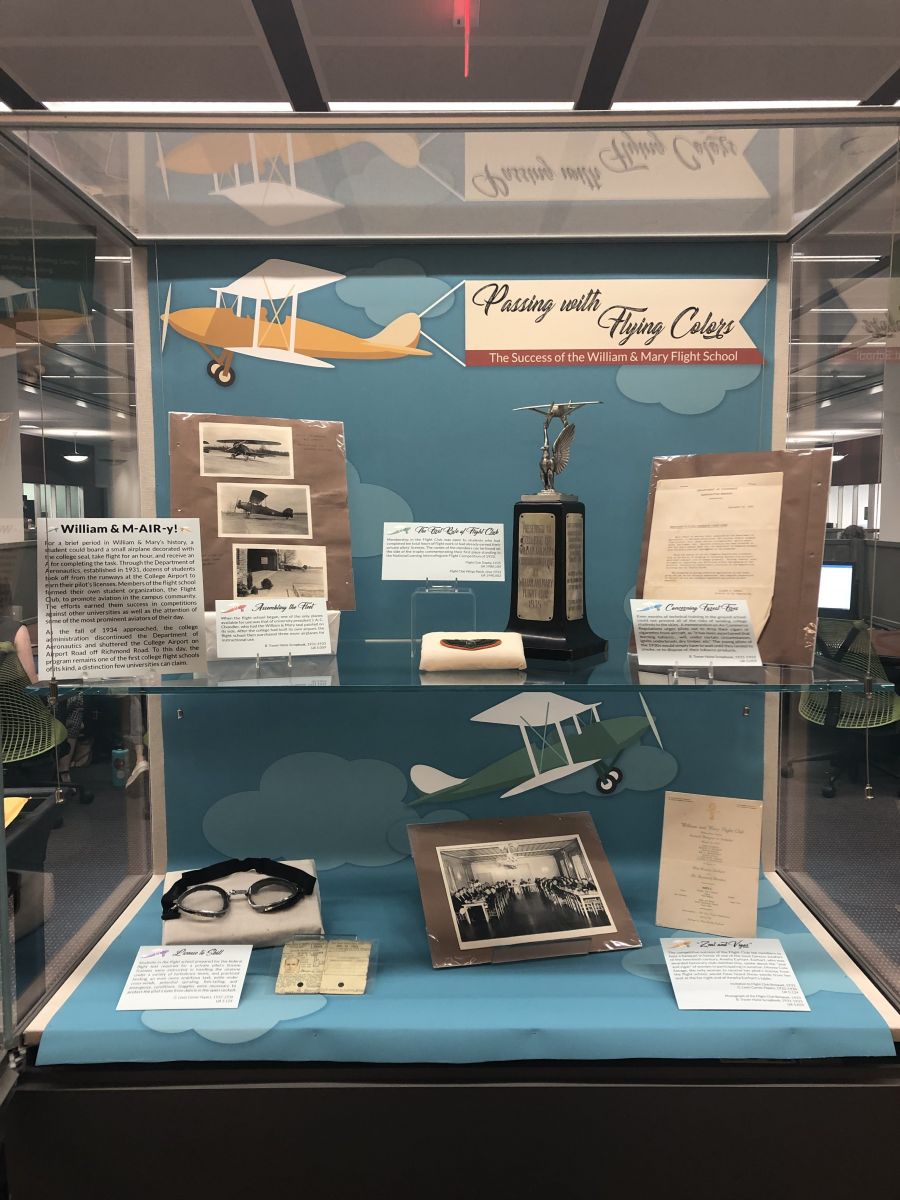 "Passing with Flying Colors," exhibit in Swem
"Passing with Flying Colors," exhibit in Swem
Library lobby. Curated by Rachel Wilbourne ('19),
Special Collections Student Assistant.
When the Department of Aeronautics at William & Mary entered its second academic year in the fall of 1932, it did so with 28 aspiring pilots enrolled in the Aeronautics 101 ground school. According to an article in The Flat Hat from September 27, 1932, the curriculum of the Department of Aeronautics comprised 102 hours of classroom instruction and 68 hours of shop work on the department’s airplanes. These grounded requirements were required of all flight students, regardless of specialization. The academic preparation for flight included a range of theoretical and practical skills, including hearty helpings of meteorology, navigation, airplane engineering, and the finer points of the parachute.
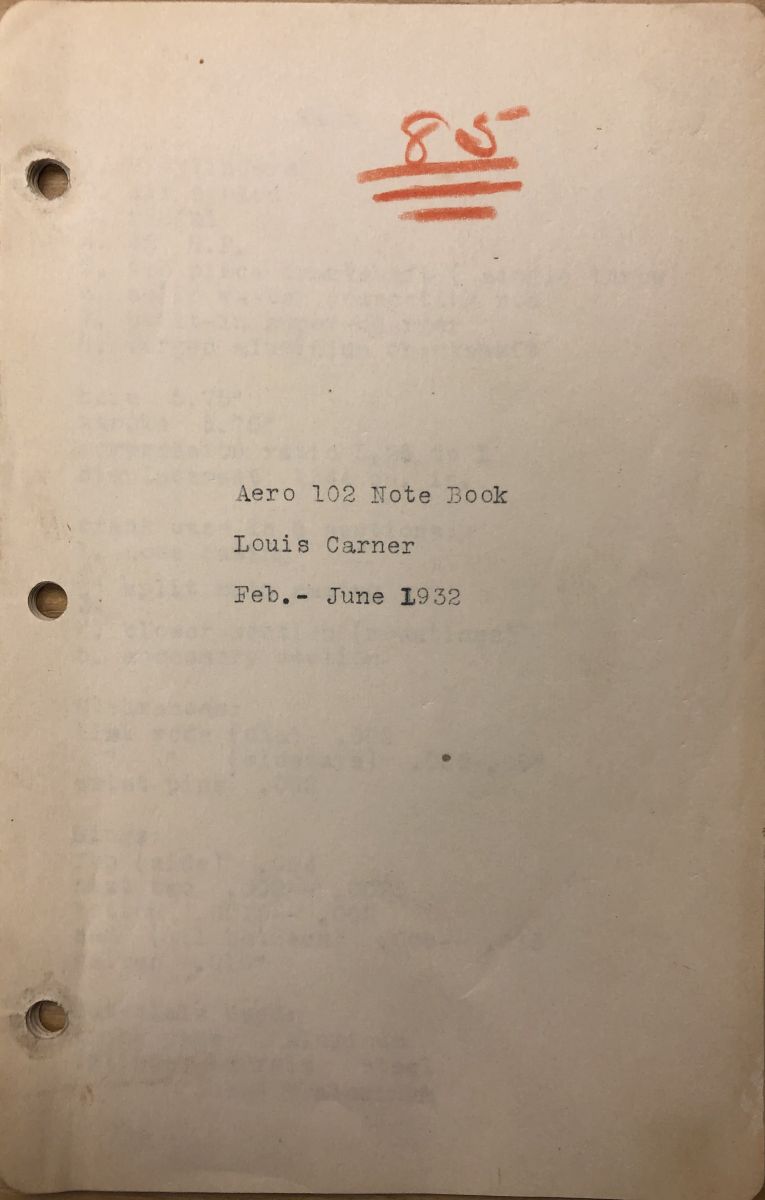 Aeronautics 102 notebook. G. Louis
Aeronautics 102 notebook. G. Louis
Carner Papers (UA 5.059)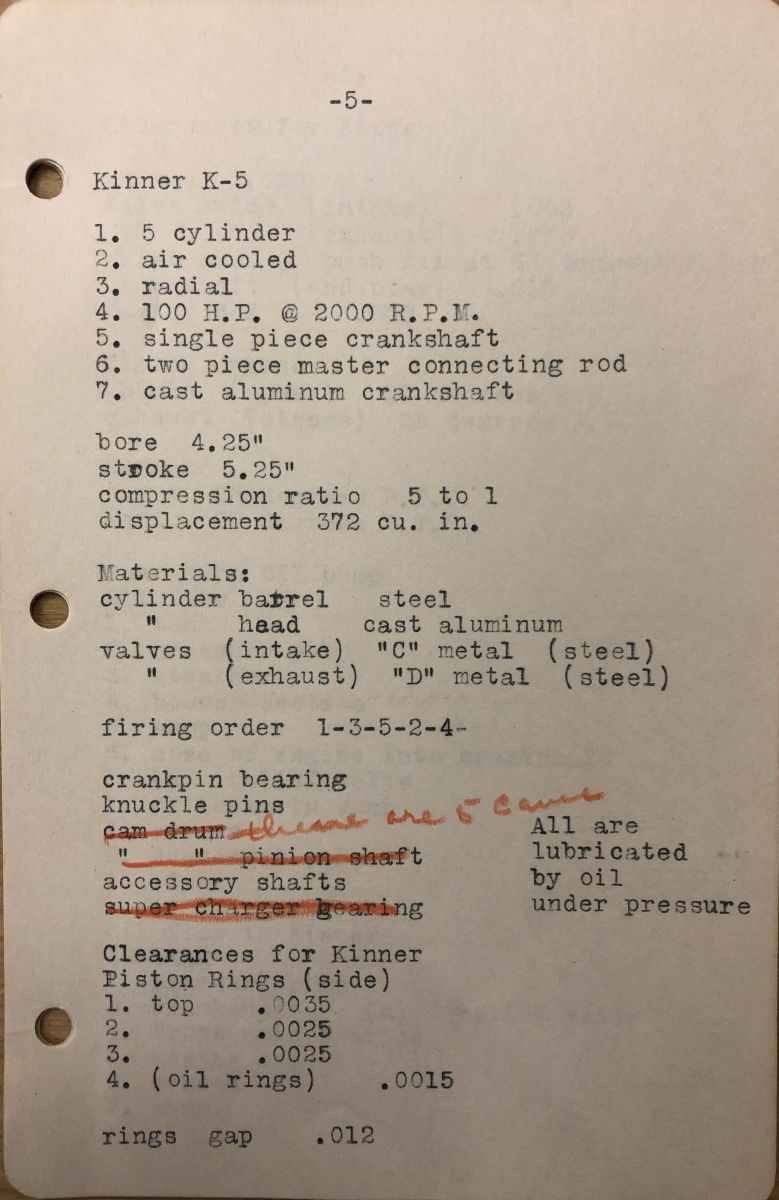 Notes on Kinner K-5, Aeronautics 102
Notes on Kinner K-5, Aeronautics 102
notebook. G. Louis Carner Papers
(UA 5.059)Among the G. Louis Carner Papers held in the University Archives is the young man’s notebook for ground school from when he was enrolled in Aeronautics 102. Carner, who would go on to become president of the William & Mary Flight Club, includes in his notebook the mechanical details of different engines models with which he would have worked during his time in the “shop” at the College Airport.
Based on Carner’s logbook from his time in the flight school, he would have been especially familiar with the Kinner K-5 engine used in a Kinner Fleet biplane. This plane was one of three owned by the Department of Aeronautics for practical flight instruction, and it was in the Fleet that Carner recorded much of his local solo flight work, including a round-trip flight to from Williamsburg to Washington, DC.
The introduction of aviation and aeronautics to the college curriculum represented a first for higher education in the country. Notebooks and objects like those belonging to Louis Carner recall the reality that the study of aeronautics was not merely a technically demanding hobby, but was also a subject for course credit. Ground school courses were listed in the college catalog under the Department of Aeronautics, with the usual tuition and fees applicable to all regularly matriculated students. For the few years that the program was in existence, participation was accessible to any tuition-paying student who wanted to learn. Although women had only been at the university for a little over decade, the course descriptions clearly do not discriminate against the female students, stating that “women, as well as men, are admitted to the ground school work and flight training, provided they can meet the prerequisites.”
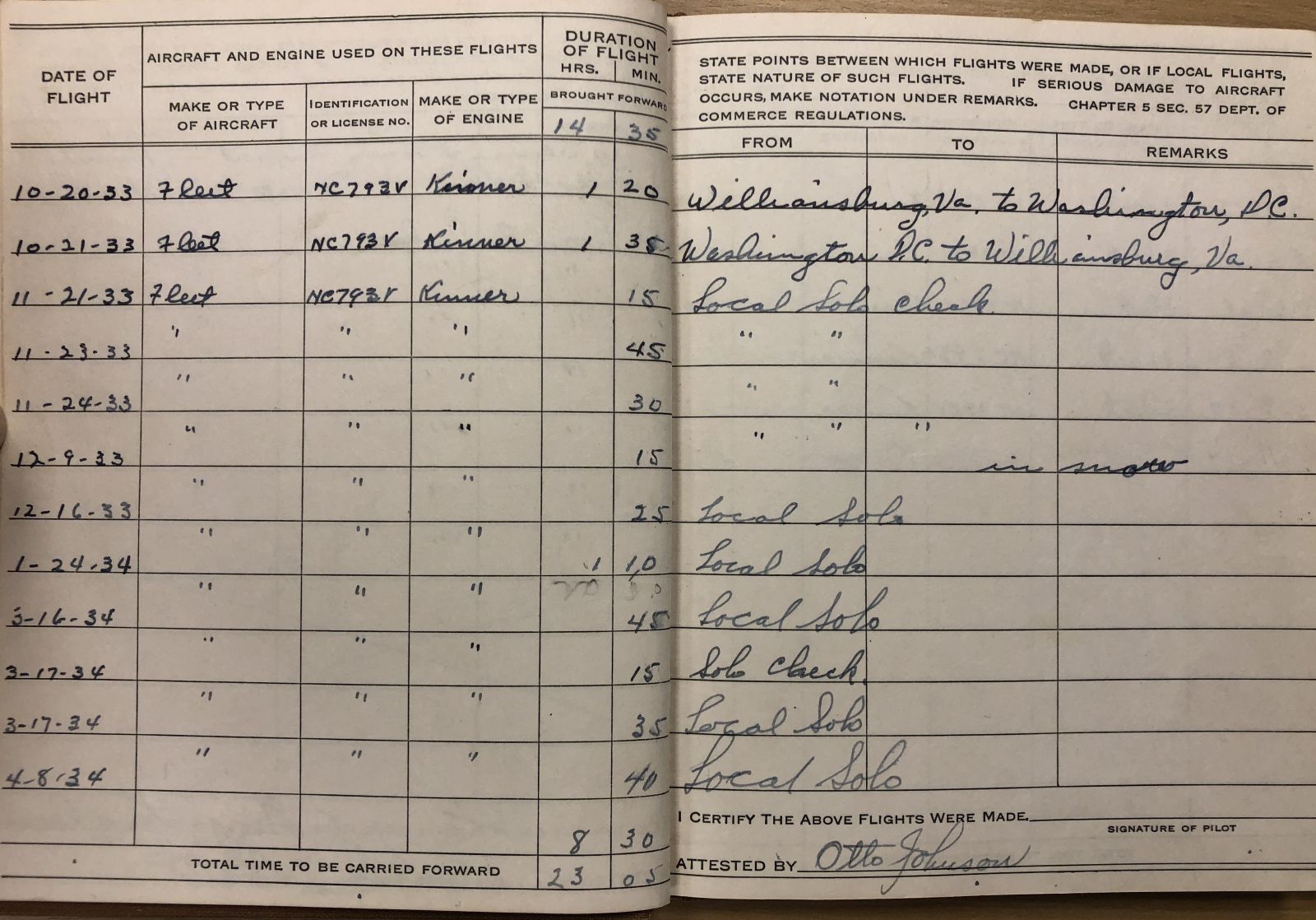 Pilot’s logbook, inside. G. Louis Carner Papers
Pilot’s logbook, inside. G. Louis Carner Papers
(UA 5.059)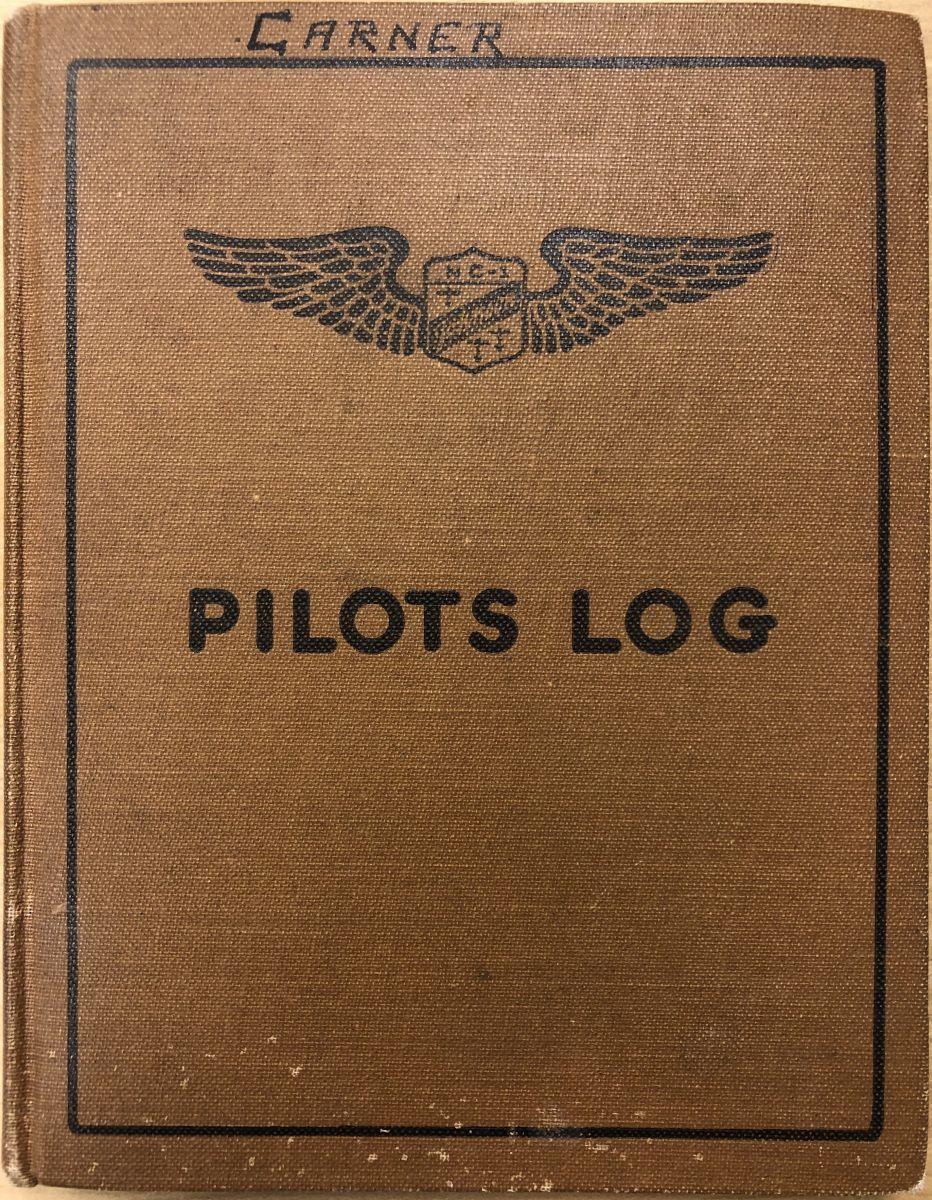 Pilot’s logbook, cover. G. Louis Carner
Pilot’s logbook, cover. G. Louis Carner
Papers (UA 5.059)Flight training at William & Mary was a brief but exciting moment in the academic history here, and the stories that remain from it reveal bold students not so unlike the undergraduates today who pursue unusual and exciting coursework wherever it is offered. For those who seek to take to the skies, however, it seems that for the time being, Math-Powered Flight will have to suffice.
For more information about the location and facilities of the College Airport, see our Wiki and the SCRC blog post from August 10, 2018. More manuscripts and artifacts relating to the Department of Aeronautics can be found in the G. Louis Carner Papers (UA 5.124). Archived editions of The Bulletin of William & Mary and The Flat Hat are available through the Digital Archive.
Written by Rachel Wilbourne ('19), Special Collections Student Assistant.